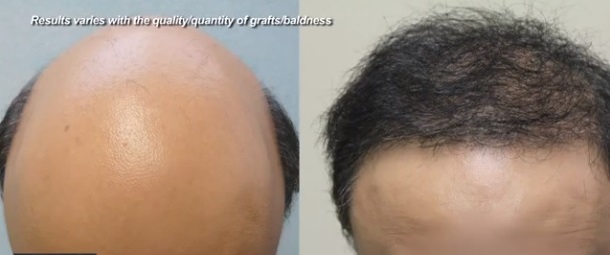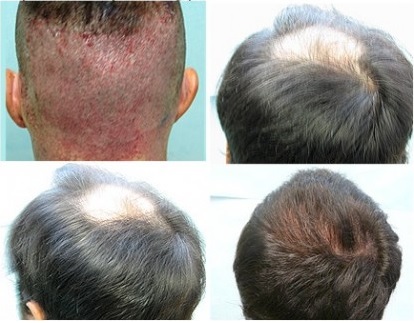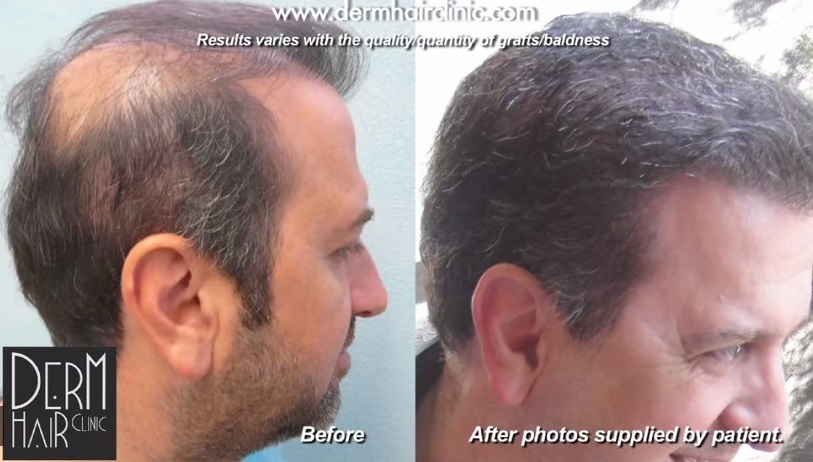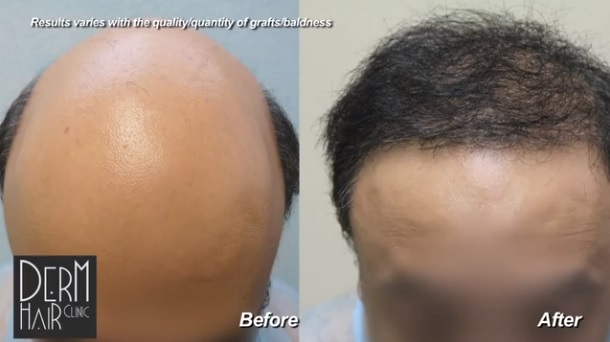
What Affects Hair Transplant Graft Count In A Hair Surgery
According to Dr. U, there are many variables that are factored into an estimated hair transplant graft count. Here are some examples.
Determinants of Hair Transplant Graft Count: Extent of Hair Loss
hair transplant graft quantity needed would be different between someone who is just starting to lose hair will require fewer grafts compared to a person who has reached a more advanced stage of baldness.
The Hamilton Norwood scale is a visual diagram which depicts the stages of hair loss. There is one set of illustrations for men and another for women. Since men will experience very distinct regions of hair loss, it is easier to arrive at a general estimate of the number of grafts needed for a hair restoration surgery.
Again, there are many factors that will affect the actual donor count needed. But as a very rough guideline, one could simply take the number of the Hamilton stage and multiply it by 1000-1500 grafts. Therefore, a Norwood 3 patient might need between 3000-4500 grafts.


Two sessions were needed to complete the 14,000 graft extraction and insertions* Determinants of Hair Transplant Graft Count: Hair Texture
There are many types of hair textures across patients. And this will affect the degree of coverage that is possible. For example, those with curly hair will require a fewer number of grafts compared to someone with thin, straight hair.
Determinants of Hair Transplant Graft Count: Hair Thickness
Another factor that is considered in hair transplant graft count estimates is the thickness of the hair shafts. Individuals who have thinner, wispier hair will have greater natural global density. By contrast, those with thicker hair will actually have a much lower hair density. Individuals of Asian descent, for example, have the thickest hair strands of all ethnic groups. But the actual number of shafts per square centimeter is comparably much smaller. So in a hair transplant, they will require fewer grafts than individuals with fine, straight hair.
Determinants of Hair Transplant Graft Count: Hair Color
Believe it or not, hair color also plays a role in the number of grafts that would be considered for a hair transplant procedure, according to Dr. U.
The appearance of coverage cannot always be defined quantitatively. In fact, it can be a subjective phenomenon.
A person with dark hair and light skin will show a much greater degree of contrast. Therefore, they will probably need more grafts compared to someone with light skin and light hair, or dark hair and dark skin.
Determinants of Hair Transplant Graft Count: Patient’s Goals
If you are considering a hair transplant surgery, it will be important to be clear about setting your standards for a successful outcome. Some people will be happy with subtle and modest improvements in their overall coverage. They may not be comfortable with a completely drastic change from their original original appearance. Or they may prefer to establish an outcome that maintains an element of age appropriateness.
Others may want to take a more aggressive approach and try to look as youthful as possible.
If more coverage is desired, this will require a greater number of hair grafts.
Also, if the patient wishes to conceal linear scarring, many of the grafts will need to be invested into the inserting the follicles to camouflage this tissue, explains Dr. U.
Determinants of Hair Transplant Graft Count: Availability of Body Hair
Most clinics are only able to extract hair from the head. However, if the patient requires more grafts and has enough body hair available, a physician like Dr. U who is able to perform body hair transplant procedures will be able to provide a much higher graft count estimate.
Preparing For A Hair Restoration Consultation
Many people commonly report that they have received different estimates of graft counts from doctors. A likely reason is the varied parameters used by hair transplant service providers.
Therefore, if you are considering surgery, it would help to become familiar with the different factors used to predict the number of donor grafts needed before attending consultations. You would then be able to ask the physician what factors they used in generating their estimate. From this point, you can better clarify your overall goals for the procedure.
Ways to Estimate Graft Count Yourself
If you are interested in just a rough prediction of the number of grafts for your hair transplant, here are some methods that can help you get a general idea.
(1) Look at Patient Cases
There are many before and after photos and videos on the internet of real patients who had undergone hair transplant procedures. Many of them state the number of grafts that were used. Besides You Tube and general Google searches, it is also possible to find such examples on hair restoration forums.
Choose a patient whose case is similar to yours. Look for someone of a similar ethnic background, for example. Or focus on other characteristics like hair thickness, texture and contrast between hair and skin color. And of course, try to find someone who came into their surgery with a similar phase of hair loss as yourself. See how many grafts were needed to create their final result.
(2) Measuring Surface Area
It is also possible to try and measure the surface area of the bald regions on your head that you wish to cover. Some people will use a translucent piece of paper like tissue paper or wax paper to trace an outline on their head. The approximate surface area can be measured in terms of square centimeters.
Many doctors will take a conservative approach and insert about 30-35 follicular units per square centimeter. Others will be able to insert closer to 80 follicular units per square centimeter. However, according to Dr. U, the actual density will need to match what you naturally have on the surrounding areas of your head.
An Official Hair Transplant Graft Count
An estimate can offer a general idea of how many grafts you will need. However, the actual count will need to come from the doctor who performs your surgery. Once again, come prepared to your first consultation by understanding what types of variables will determine the number of donor grafts needed for your procedure. This will help you better understand the basis behind different graft counts you may receive from various hair transplant providers.
Related articles
Hair Restoration Graft Calculation: Calculating How Many Hair Grafts You’ll Need
Q. How many grafts can be transplanted in one hair restoration session?

